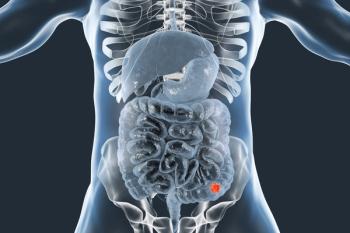
Make it personal: Three ways to connect with healthcare consumers
: Remembering to engage in healthy behavior can often slip to the bottom of our list of priorities. In a world where we need to be reminded and motivated to be the healthiest version of ourselves, the right nudges at the right time can help us get there.
Our health is intensely personal and we all know the right things to do to protect our health: diet, exercise, and regular screenings and checkups with our doctors; yet so many of us don’t do these things, so the entire healthcare industry is focused on how to change that. The business of healthcare isn’t a fun activity and the intrinsic motivation to do the things we think we have to do can easily be drowned out by the distractions of life. Let’s face it, unless we’re bleeding, we need to be reminded and motivated.
The great news is that technology-based nudges can positively affect health behaviors, and there is a tremendous amount of data proving what works.
In Richard Thaler’s and Cass Sunstein’s “Nudge: Improving Decisions About Health, Wealth, and Happiness” (2008), the important concept of applying behavioral economics to healthcare highlighted how small movements or changes have a profound effect on how consumers approach their own health. The first part to the change process is in how that message is delivered, a communications process that seems so simple but is actually quite complex. It’s important to consider the fundamental factors driving engagement: will a consumer hear your message and do they actually listen? To delve further into making the answer “yes” to both, healthcare organizations and sponsors must consider the following:
1. Who delivers the message? First, it is critical to understand and define who is delivering the message and to what audience. We have incorporated the best of consumer marketing methodology and the concept of “test and learn” into our communications to consumers over the years. We know that consumers will be more likely to respond to certain people or organizations, and this is especially true in healthcare. Consumers will notice when their pharmacist or their doctor advises them. Perhaps counter-intuitively, we’ve found that consumers will also respond to health plans urging them to receive services, perhaps because consumers don’t expect health plans to encourage activities that incur expenses to the plan.
2. How do consumers receive authority? This understanding of consumer behavior and the importance of personalization is critical for changing behaviors. No one message or approach can be applied to the entire population, especially when you are asking a consumer to do something potentially difficult or frightening. Through our experience, we know that consumers hear messages about their health very differently, and that variation is tied to age, gender, ethnicity, education level and socioeconomic status. For example, seniors are more likely to respond to messages about safety in the home when the message is delivered in a male voice. In another example, we worked with a large national health plan on a critical initiative and intervention strategy to address colorectal screening disparities in ethnic populations. We found that non-Caucasian members who heard ethnic specific messaging from a male voice had 56% higher screening rates than a control group.
3. Will they listen now? Perhaps most importantly, it is critical that messages are delivered at the right time, with the right content, and in the right way. We address this in a few ways.
Right time. Today, health sponsors, such as health plans and employers, need to know when and how to reach consumers with these important messages. We know that there is an over-velocity and frequency of messages in healthcare; explanation of benefit statements (EOBs) alone paper the homes of almost every healthcare consumer in the U.S. on a monthly basis. How do we cut through the noise and get their attention? We determine when it is relevant to send messages to consumers by employing the strategies above, and by creating an intentional member experience with the right messages at the right time. For example, our evidence shows that calling younger people later in the day is more effective than earlier.
Right content. When the messages are targeted to a consumer’s intrinsic motivation (e.g., I want to be around to attend my grandchildren’s weddings so I need to take my meds), they are most effective.
Our communications are reinforcing a message that consumers have already received from a trusted source, such as their physician; they aren’t receiving a brand new message about their healthcare from us for the first time. It is information that supports what they have been told to do, from getting an important screening to refilling their medications to getting more exercise and changing their diets.
Another critical requirement is to understand barriers to action from that consumer’s perspective. If we find out that something important that we need to do may be easier than we feared, we are much more likely to change our minds when given the chance. As Thaler said, “First, never underestimate the power of inertia. Second, that power can be harnessed.” In healthcare, a consumer may delay or avoid an important test or screening, even when they know they need it. This occurs for a variety of reasons, including lack of understanding the need for it or fear or avoidance of something that might be uncomfortable. We use this “second chance” nudge in healthcare very effectively. When we ask consumers whether they want to enroll in a condition management program or schedule an appointment for that overdue screening and they say “no,” we find out why and address the why. Then, by asking a simple “are you sure?” question, we convert up to 30% of those initial “no’s” into “yes’s.” Below are some examples of how we changed attitudes and actions with this simple approach:
· Enrollment in a stress management program: converted 34% of people who initially declined.
· Enrollment in a diabetes condition management program: converted 27% of people who initially declined.
· Enrollment in a weight management program: converted 26% of people who initially declined.
· Statin refill program: converted 27% of people who initially said they were not going to refill their medication.
· Opt in to SMS text reminder program: converted 15% who initially declined to participate in a text reminder program.
Right way. There are a myriad of ways to communicate with consumers today, and consumers expect their preferences to be known and honored. These kinds of communications are valuable extrinsic motivators for driving activation and engagement. Some consumers will respond best to email, others to phone calls, and others to a live agent; it depends upon the topic as well as the person. Gone are the days when the only choice was a letter or a phone call. Now, consumers of all ages are turning more and more to digital channels and resources, such as email and SMS, as well as trusted online resources and portals that aggregate their healthcare data and provide online support and guidance for their health.
Another example of a powerful extrinsic motivator is the use of incentives. Even people with intrinsic motivation need nudges to help address their health needs. Incentives are important tools that have been in place for many years in healthcare, and are also becoming increasingly more regulated, for both commercial and Medicare members. For example, with Medicare, any incentives offered around behavior change must reward behaviors and activities (such as reporting blood sugar levels), not outcomes (achieving a blood sugar goal. The key is to have a well-designed incentive program that provides relevant rewards for the right behaviors. Incentives are a great start to activating a consumer on certain behaviors, but are not necessarily going to support sustained behavior change. As an industry, we are working to embed more broad-based incentives in plan design and initiating behaviors in a range of programs. While the compliance regulations continue to evolve, so too do the incentives levers as well as the continuing investment by employers and payers.
As stated earlier, healthcare is deeply personal, and changing our behaviors and our decision-making processes is rarely easy. For the healthcare industry today, we have a rich set of data about the consumers we serve. It is up to us as an industry to harness the power of personalization and the use of technology to create and sustain behavior change and improve the health of ourselves and our communities.
Stan Nowak is president and co-founder of
Newsletter
Get the latest industry news, event updates, and more from Managed healthcare Executive.






















































